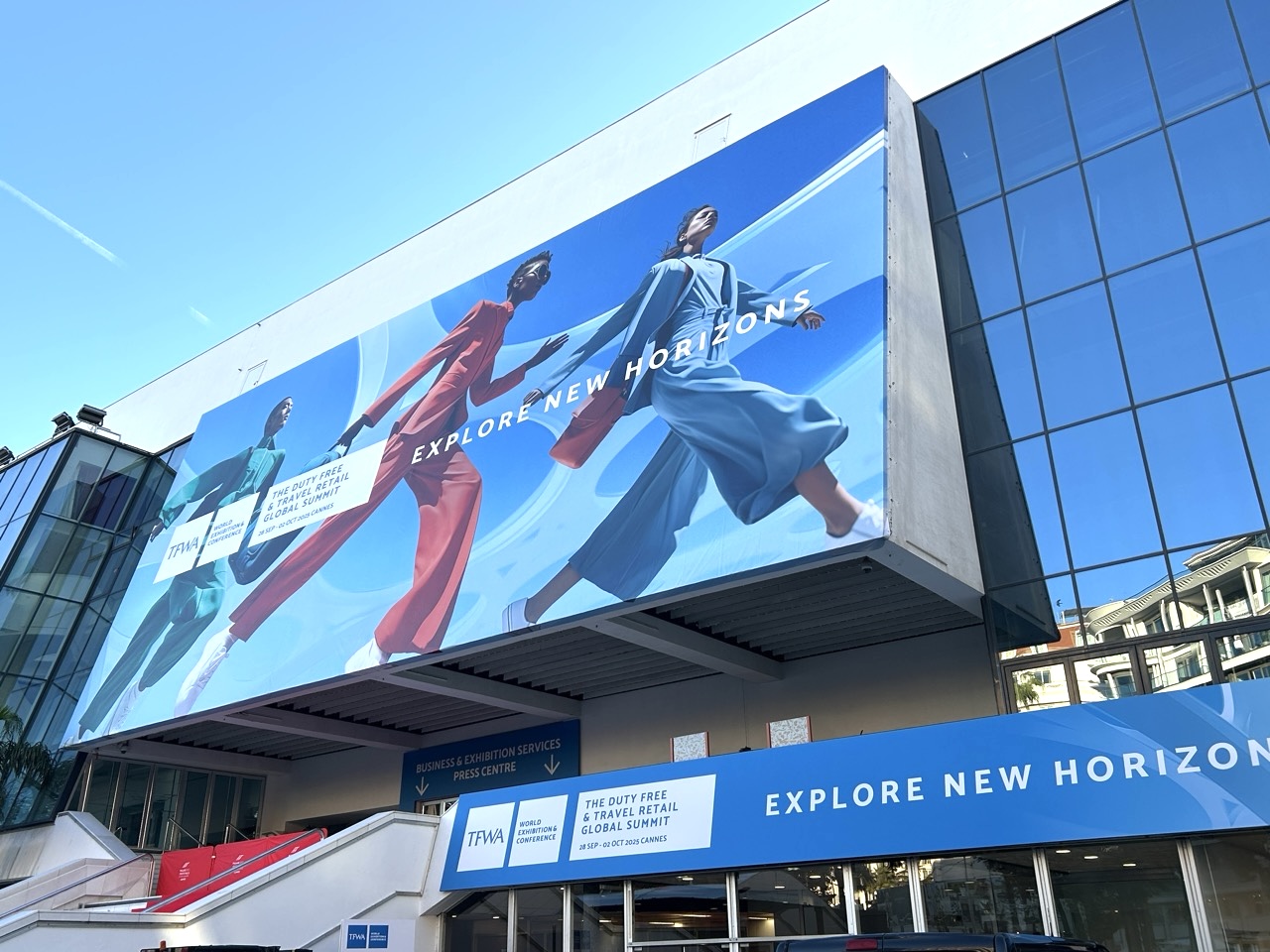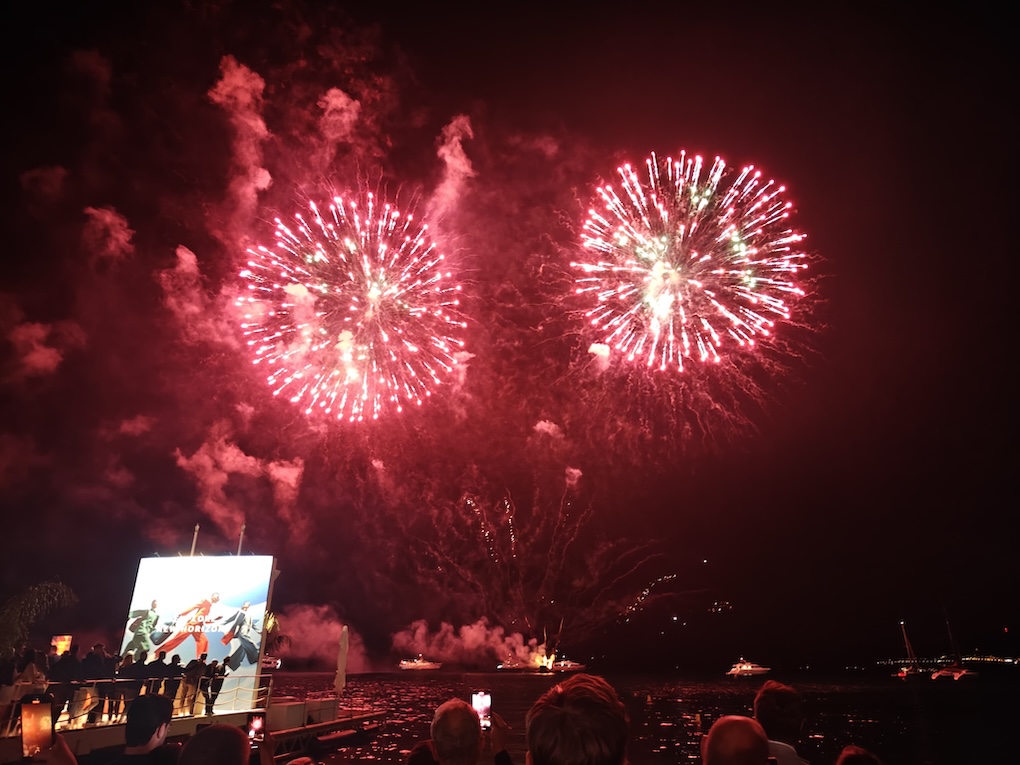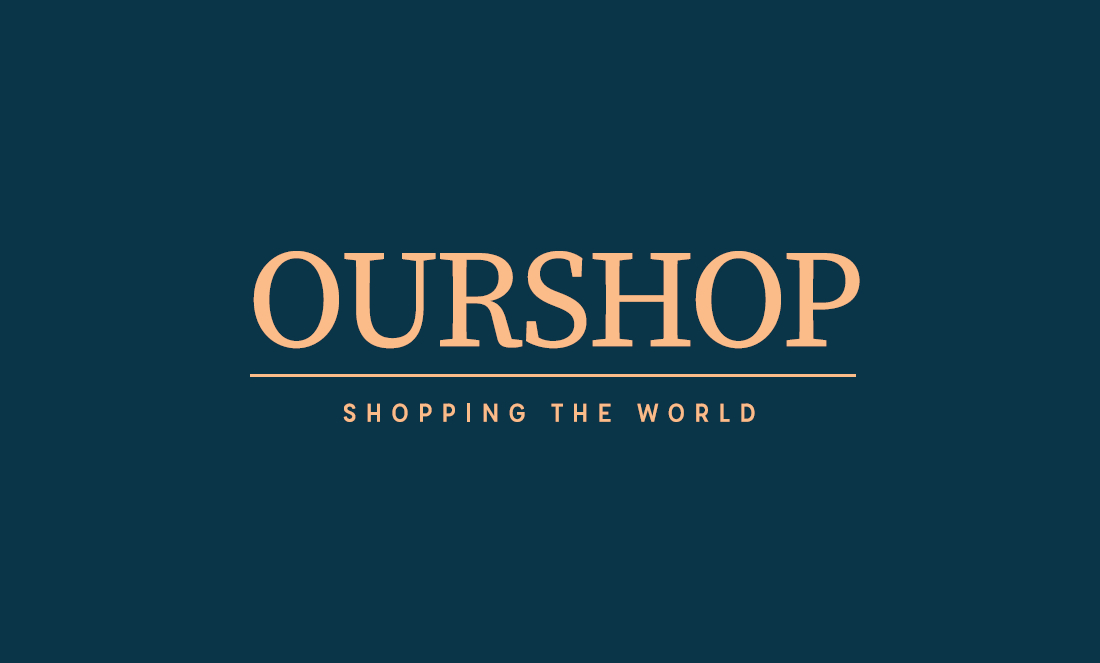
In a Moodie Davitt Report global exclusive, Asia’s leading low-cost carrier AirAsia today announced the launch of OURSHOP, a new digital marketplace designed to connect international travellers with airport, high street and local specialist retailers. This pioneering initiative seeks to turn the digital and e-commerce challenge into opportunity, linking the consumer with multiple marketing and shopping touchpoints throughout the travel journey.
It’s a big and ambitious play. Martin Moodie examines how the concept works and speaks with AirAsia Group CEO & Co-Founder and serial entrepreneur Tony Fernandes about the vision and implementation that he believes will transform the airline into a digital company.
Music man turned airline man with a passion for low fares. Serial entrepreneur. Sports fan. “Believe the unbelievable. Dream the impossible. Never take no for an answer.” – Tony Fernandes’ LinkedIn entry.

Prologue: Take an inflight e-marketplace centered on a vast range of products from a wide array of airport and local market retailers and anchored on best value. Marry it with an acute understanding of the habits and desires of individual consumers and linked to the traveller’s destination or take-off point. Add in multiple consumer touchpoints all along the travel journey, from online booking to social media, from boarding gate to check-in, from onboard Wi-Fi to arrival. Inject a vast audience of 80 million potential shoppers and a unique fulfilment capability.
Welcome to OURSHOP, a new shopping and services platform which will be soft-launched by AirAsia on 4 July across its network of more than 130 destinations in 26 markets.
OURSHOP will link AirAsia’s 80 million passengers (2018 projection) with airport, high street and local specialist retailers. It will drive passengers and other shoppers towards the retail providers, not only increasing the latter’s virtual and physical footfall but driving up transaction volumes and values.
“We envision to be every passenger’s first point of reference when they travel, being the single platform to shops and to connect,” says AirAsia.
The platform will bring retailers a myriad of benefits, the company claims. These range from new ways to expose their offers, to better understanding of customer behaviour, dedicated partner support and profit-driven marketing. Consumers in turn will benefit from convenient, cashless transactions, and access to a vast range of genuine goods from traditional duty free products to local market specialties. Not least, they’ll be able to earn and redeem AirAsia ‘BIG’ big loyalty points.
“Other start-ups have spent billions acquiring customers, I’ve got them already.”

 Using the OURSHOP app, customers can choose their preferred delivery method from a quartet of choices – airport collection; pre-book and collect onboard; downtown in-store collection and home delivery. AirAsia says it is in advanced talks or contract stage partnership negotiations with the majority of the world’s biggest duty free retailers as well as many local market ones. It has also struck agreements with several external merchants to support home delivery. And via its own expanding fleet, it offers an arguably unrivalled international fulfilment option. “We will leverage on selling to our passengers from pre-ticket purchase to the final arrival,” the company says.
Using the OURSHOP app, customers can choose their preferred delivery method from a quartet of choices – airport collection; pre-book and collect onboard; downtown in-store collection and home delivery. AirAsia says it is in advanced talks or contract stage partnership negotiations with the majority of the world’s biggest duty free retailers as well as many local market ones. It has also struck agreements with several external merchants to support home delivery. And via its own expanding fleet, it offers an arguably unrivalled international fulfilment option. “We will leverage on selling to our passengers from pre-ticket purchase to the final arrival,” the company says.
Earlier this week Martin Moodie met AirAsia Group CEO and Co-Founder Tony Fernandes in London. Pioneering initiatives are nothing new for the man who defied the skeptics to create the low-cost airline template in Asia and then turn it from a debt-ridden, two-aircraft operation with 200,000 passengers into the region’s biggest low-cost carrier. But he admits that OURSHOP is one of the most exciting projects he has driven to date, with the potential not only to transform AirAsia into a digital company but to reimagine the travel shopping experience.
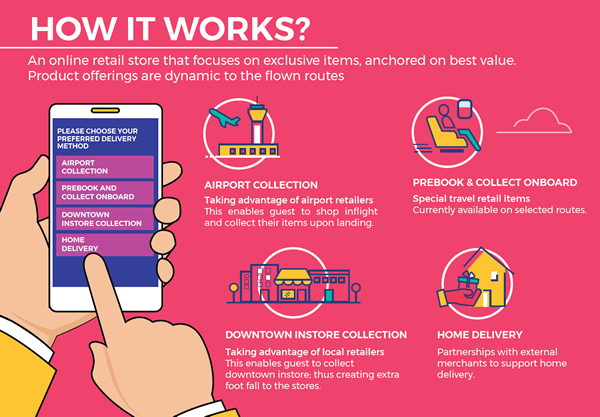

Q&A – UP CLOSE AND PERSONAL WITH TONY FERNANDES
Martin Moodie: Tony, you spoke in an interview last year about your vision of AirAsia becoming the “Amazon of the skies”, a new marketplace. OURSHOP is the realisation of that vision. Tell us how it came about and where the project is at in advance of the soft launch on 4 July.
Tony Fernandes: It first came out of the fact that we never had a mutually respectful and symbiotic relationship with airports. Airports have always just charged us whatever they can and they make money off our passengers. I always felt the relationship was very one-sided. So, as I was developing our ancillary revenues model and data become more prevalent, I thought, wow, I’ve got a monster machine here.
“Everyone wins. The airport wins, the retailer wins and the airline wins, as opposed to us trying to do our own duty free and cutting out the airport guys.”
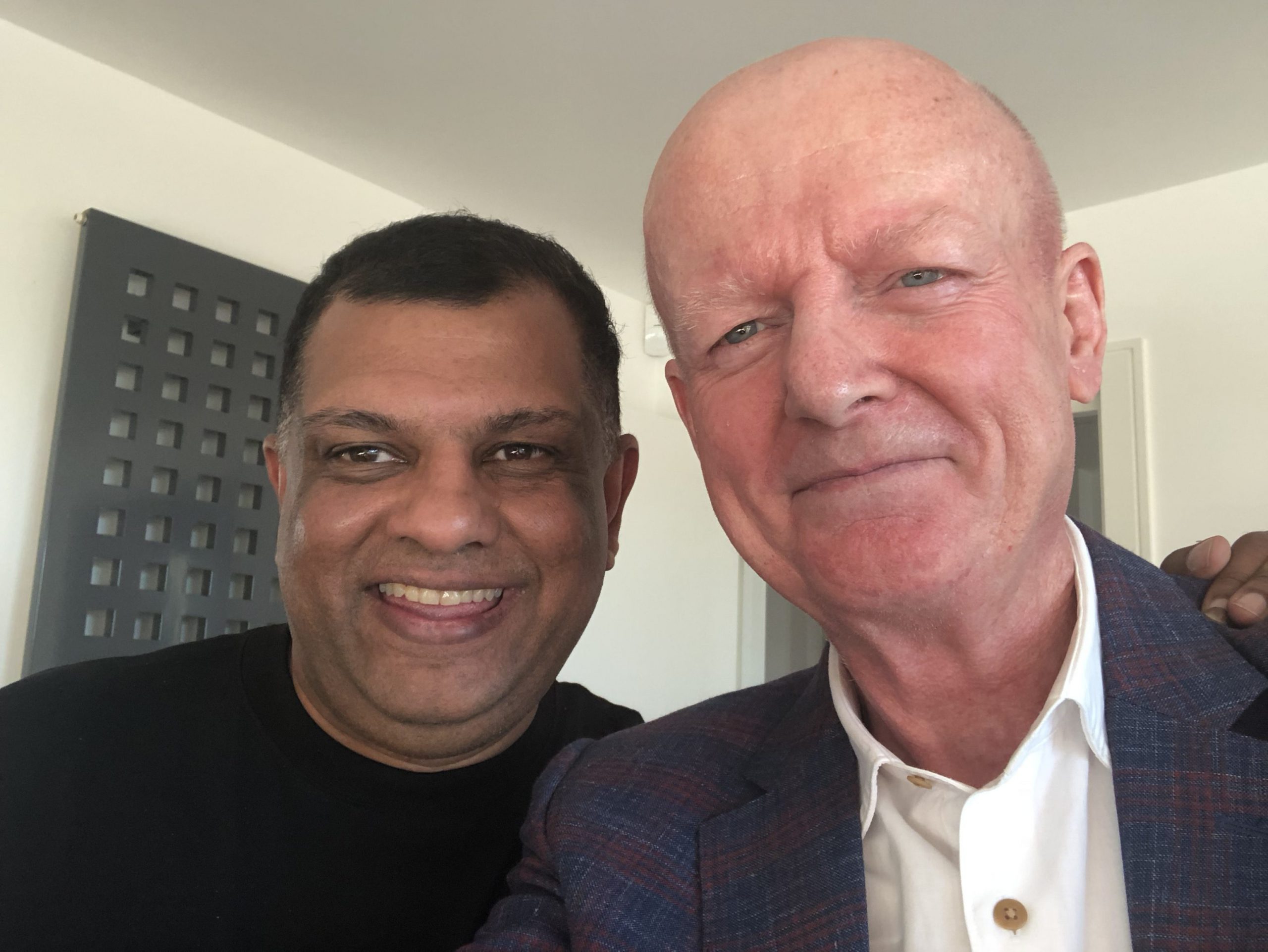
Airports don’t know their customers. Some may sign up for duty free memberships or whatever, but the reality is most of their customers are transient. So, I thought, well, I have a relationship with the customer. How do I extend that relationship?
So, e-commerce became an obvious point, because our origins are e-commerce. We were the first airline in Asia to use data and so, it made complete sense for me to get involved with e-commerce. Then it became a question of what is the e-commerce model? We finally came up with a model that made complete sense, in that everyone wins. The airport wins, the retailer wins and the airline wins, as opposed to us trying to do our own duty free and cutting out the airport guys. In that scenario we would have become the enemies of the retailers in the same way we had been adversarial with airports in the past.
The average airport customers visit some of the shops but in different parts of the airport. The retailer wants as much footfall as possible to drive sales. With our website, we can target the customer. We know what they like and then they can either pick it up on the plane or pick it up from the airport retailer – which is best for the retailers because then they might get extra sales as well.
OURSHOP has really been an evolution of looking at different models and seeing how we best use our data, but without getting into heavy capex and big stock risks etc. It’s about taking some of the best e-commerce models and applying them to our marketplace.
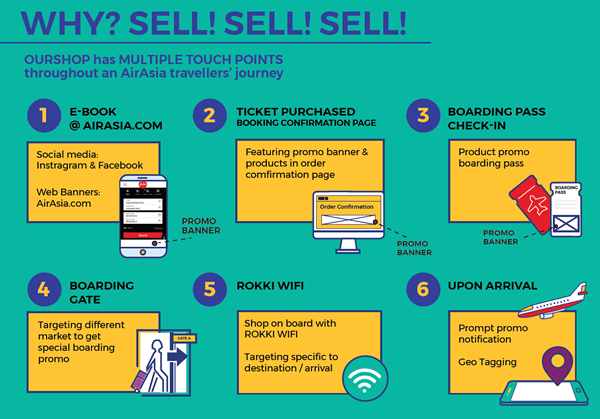
So, you’re creating an online marketplace based on your passenger base, which you know intimately. And you are talking to that marketplace, to that consumer, along multiple touchpoints of the travel journey. I guess the first one is when I come and book my ticket on your website?
Correct. And that marketplace, by the way, can extend to other airlines as well. I have two other things that an airport doesn’t have. One, I have my loyalty points. And two, depending on the market conditions, I can do home delivery as well. Then we can take it one step further. We can do the airport experience but we can do more.
Most Asians are going to, say, Thailand to shop and eat. So, once they’ve done their duty free shopping, and knowing their preferences as I do, I can also direct them to shops in Bangkok and they can ship the goods back on AirAsia. The other symbiotic element I found is that many of my customers are small retailers anyway. So, they could list their goods, whether it’s a small farm in, say, New Zealand offering a certain type of wellbeing product which could be sold to a huge number of Chinese passengers. Manuka honey, whatever. So, the possibilities are endless. Now, it’s all about how we implement.
Your marketing deck suggest you’re going to work with airport retailers, high street retailers, and small local retailers?
Anyone. But one step at a time. First one is the airport, second the high street and then maybe we can support a marketplace where that farmer in New Zealand could list his manuka honey. We have a full logistics platform.
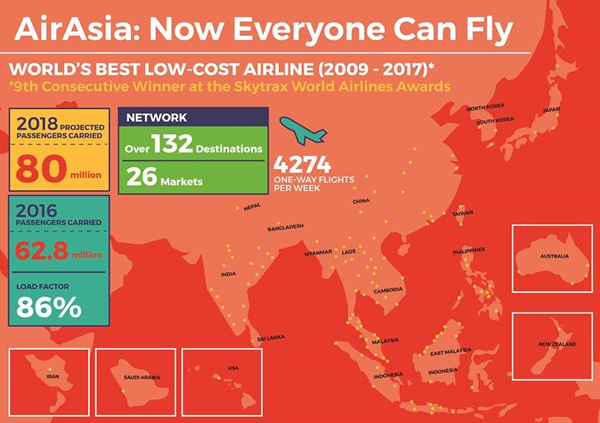
As a consumer, I can pick up my OURSHOP purchases at the airport, I can pick up at downtown shops, I can pick up on your planes or you could home deliver for me. So you have lots of touchpoints to encourage buying and several fulfilment options. And to help all that along you’re putting in Wi-Fi across your fleet. When’s that happening or has that happened?
Malaysia will be done by the end of this year. The Philippines has just started. Indonesia’s already being implemented. I think in a year’s time we’ll have most [of our fleet] covered.
That strikes me as the final key to unlocking the door. No-one could have dreamed of having Wi-Fi in the sky 20 years ago, when everyone was already predicting the demise of inflight retail.
Yes. What we’ve done, if you like, is to go back to the days of the American inflight catalogue system of putting stuff onboard. But our inflight shopping experience can be even better because I know my customers on the plane – we have the data so we can carry the right stock to sell. We can do promotions, we have loyalty points. While other start-ups have spent billions acquiring customers, I’ve got them already.
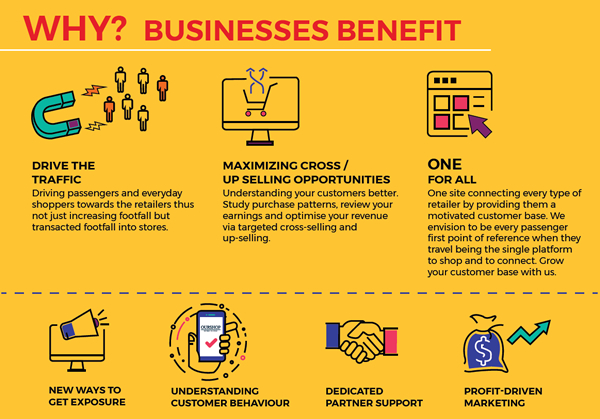
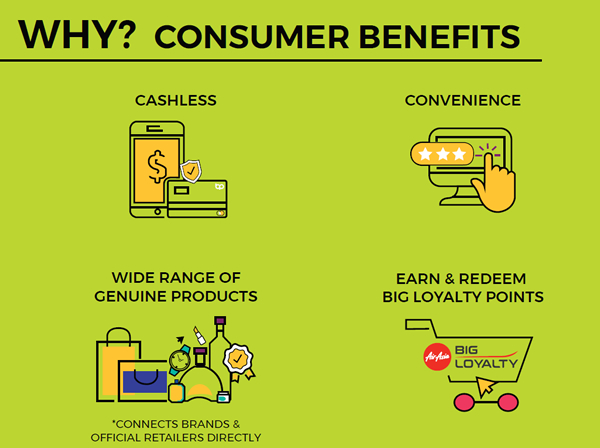
TONY FERNANDES PROFILE One of Asia’s most recognisable entrepreneurs, Tony Fernandes is best known for co-founding AirAsia, the region’s first low-cost airline, with Datuk Kamarudin Meranun. Fernandes and Datuk Kamarudin famously bought the ailing airline for a token MYR1 (approximately US$0.25) and MYR40 million (us$10 million) in debt, turning it around within two years and growing it from a Malaysian domestic carrier into Asia’s largest low-cost carrier by passengers carried. Today it has operations in five countries serving some 260 routes to more than 120 destinations across Asia, Australia and New Zealand, the Middle East and the US. Fernandes studied in the UK and qualified as an Associate Member of the Association of Chartered Certified Accountants in 1991 and Fellow Member in 1996. He began his career in Richard Branson’s Virgin Group before returning to Malaysia as Warner Music Group’s Vice President for Southeast Asia before venturing into the airline business. Fernandes has received numerous honours and awards over the course of his career. These include the Honour of the Commander of the Order of the British Empire, conferred by Her Majesty Queen Elizabeth II in 2011, and the Commander of the Legion d’Honneur, awarded by the French government for his outstanding contributions towards the economy of France through the aviation industry. In 2010, Fernandes was named Businessman of the Year by Forbes Asia – the first person from Malaysia and Asean to receive the honour – for democratising air travel and transforming AirAsia into a successful global brand. Time Magazine included Tony Fernandes in the 2015 Time 100 list, the magazine’s annual list of the 100 most influential people in the world, which included Chinese President Xi Jinping, Microsoft CEO Satya Nadella and hip-hop artist Kanye West. In 2016, Fernandes was recognised by the US-Asean Business Council with the Fourth Pillar Award for his extraordinary contribution towards the growth of Asean, the second recipient of the award after the Administration of US President Barack Obama. Fernandes is also a board member of AirAsia X Berhad and Tune Protect Group Berhad. He was appointed as Chief Executive Officer of AirAsia in 2001, before being redesignated as a Non- Independent Non-Executive Director and Group Chief Executive Officer on 6 November 2013. He is also Owner and Chairman of Queen’s Park Football Club in the UK. |
You said last year, “If you take Amazon, they started with a website and great distribution, now they’re buying planes. We’ve got the planes and we’re working backwards.” That was a great quote. You had the passengers and the fulfilment capability already. So you only really then had to put in the offer. I know it’s a whole lot more complicated than that, but in essence that’s what it it’s about, right?
Correct. Knowing what it is, I shied away from e-commerce. I think we’d be just burning billions because, one, there’s some big boys in there; two, the investment in infrastructure is huge; three, everyone’s trying to kill each other. So you’re burning lots of cash in keeping customers. We had to rethink the model and this is what we’ve come up with.
You’re not the retailer of goods. You’re the middle man, really. You’re the conduit. But, critically, you have the marketplace.
We’re the Alibaba. We’re the Rakuten [Japan’s biggest e-commerce company, founded in 1997 by Hiroshi Mikitani, with whom AirAsia has a joint venture budget airline, AirAsia Japan -Ed]. I questioned Hiroshi about how he started and how middle men like Amazon had become a bigger marketplace than the holder of the goods. Rakuten is a 100% marketplace. Alibaba started as a marketplace and still is really. So, that’s when I changed the model.
It always struck me that you have something else that airports don’t have, which is dwell time. And very captive dwell time. You’ve got people strapped in to their seats in the sky, often for a long time.
What do you do on the plane? I’m taking it a step further. I never could compete with Singapore Airlines or Emirates in having thousands of IFE channels and content. And the reality is that even when I fly first class, I still bring my own content onboard. I still download a few movies from Netflix or whatever.
So, I’m not going to get into the content game. I’m going to get into the shopping game. Think back to the shopping channels of older eras and even now I see my wife still watching such channels. So I’m going to take that shopping channel experience on the plane, where you’ll be able to order online as well.
Will you create a shopping channel onboard with your IFE?
Yeah, that’s the idea. But again, we’ll partner with someone as it’s not really our game.
You’ve got the cinema, as it were, you don’t have to make the films.
Correct. So, what is AirAsia’s IFE about? Shopping. Everything’s geared towards shopping, whether it’s from duty free, or whether it’s home shopping where we can home deliver goods etc.

Tony you have pioneered many things. How big is this project for you?
I don’t know. It’s big if we implement right. It kind of goes back to the very first interview I ever did. The first question was, “Will you be here in three months’ time?” I said, “I have no idea. Come to see me in three months’ time.”
Second question was, “How big will you be?” I said, “Look, the market is huge. Can I implement? Can I survive?” Did I think when I started AirAsia 16 years ago with two planes and 200,000 passengers, that I would be carrying 80 million passengers and have 230 planes? No. Though I thought the opportunity was huge because I’m a simplistic, logical man. Who doesn’t want to fly and who doesn’t want to fly cheap?
I saw the LCM [Low Cost Model] before anyone else. 700 million people [in Southeast Asia]! So, the market was there. Was I worried about competitors? No, because I knew they wouldn’t be able to implement like I could implement.
So the opportunity is massive in duty free shopping. You know it better than me. But I’m not going out for the existing market. I’m going out for a new market. Guys who may only have had 20 minutes to shop can now shop 365 days a year. People who can’t be bothered to carry goods. There’s a whole lot of them. People who didn’t have the opportunity to go to certain shops. We’ll grow the market.
The question is the same as with AirAsia. Can we implement? I think we have a unique opportunity that Amazon and anyone else can’t really implement very quickly because we have such a customer database. So, that’s the unique selling point tied in with our loyalty points and tied in with our database. We have one more advantage, in that we’re all around Southeast Asia. So, whilst Singapore Airlines is Singapore-based, Thai Airways is Thailand-based etc., we’re flying people all over Southeast Asia and Asia in general. So we have the great demographic that airport retailers will like.
Where are you at in terms of agreements with airport retailers?
We are in advanced talks or contract stages with the majority of the biggest duty free operators. The retailers are obviously where we have the relationship in the airports. If the retailers sell something then the airports get the benefit.
So you’re not the enemy of the retailer.
Yeah. It’s a new experience!
I think they’re all going to look at us at some point. It’s down to how well we implement and how well we build stuff. Everyone wants to grow, right? So, Expedia tied up with AirAsia. CAE, the biggest aviation training company, tied up with us. Singapore Airlines laughed at us when we started, yet their ground holding company has a 50/50 joint venture with us. But right now, with the big duty free retailers, I’d rather build something and show them what we’re made of and then maybe they’ll be interested in it.

The problem with duty free can be that the various stakeholders tend to fight over apportioning the pie rather than growing it. I guess you have to break down those siloes.
Yes. But we’ve been good at partnerships. We’re good at sharing the pie in that I’m looking at growing it, not taking an existing pie. So, what did AirAsia do? AirAsia didn’t take existing customers. We built a whole new customer base. People who never flew before, or maybe flew once a year and now fly two or three times a year. I don’t know what the penetration in the duty free market is, but I can guarantee you that it’s not very high.
We don’t come in with any preconception of ego. And we’re not here to take away customers. We’re here to grow the market. We’ll also respect each other’s roles. So I’m not too worried, I think it will work as we’re growing the pie and not cannibalising it. Why wouldn’t anyone want to deal with us?
How long has this been in the planning?
Oh, a long time. I’ve thought about it for years. But we’re now at a point of no return because we spent a lot on data and that data has to be monetised.
“Why can’t we have a carousel or a secondhand sales market for travellers?”
The back-office challenge must have been tremendous?
Yeah, it was huge. Originally, we underestimated it. At AirAsia we bought the right planes and we knew the model. But the ancillary business suffered because the airline was so big and so it didn’t get the focus. Now, I’ve split the company into two bits. So, the airline is run by Bo Lingam – Deputy Group CEO (Airline Business). The digital businesses are run by me. So it has a lot of attention. That’s the difference now.
So, the big reveal this week and the soft launch on 4 July?
Correct. A soft launch. But it will gather momentum rapidly.
I remember when AirAsia launched, your tagline was “Now everybody can fly”. Well, you can tweak that one quite easily now to “Now everybody can buy.”
Yes. The idea is that we’re an altruistic brand. If you look at my inflight food operation, more and more unknown brands are coming onto the plane because we’re a people’s airline. I’d like to promote products from the countries of people that fly with us.
Why are we promoting international brands when there’s so many great snacks in Southeast Asia? Why are we selling overseas tea when all that tea comes from our part of the world? Why are we selling international coffee when the best coffee beans come from Southeast Asia anyway? I’ve discovered a whole bunch of great things from guava juice to all kinds of wonderful local products. So I believe we have a platform that will enable a lot of small and medium enterprises (SMEs) to list their goods with us.
And I guess with your marketplace model instead of the traditional inflight duty free model, such SME brands won’t be held back by the normal barriers of sale or return or the domination of big brands. There’s also a generational element now as to who is buying, or not buying, what. The Millennials aren’t necessarily going to go into the duty free shop and have a nice fragrance sprayed on them and then buy it. Many can’t afford it. Many don’t like the style of shopping. Or the product. They want something else authentic and local.
Correct. So, I think that is obviously an area where we see huge opportunity but we’re going to learn. We’re going to make some mistakes and hit some bumps along the way. But I look at Etsy [an e-commerce website dedicated to handmade or vintage items and unique factory-manufactured items] and brands like that who have just sold goods that are avant-garde and off the beaten track. Etsy is fantastic. Think of how many goods you buy for travelling and then you never use them again. Why can’t we have a carousel or a secondhand sales market for travellers?
Well, what did Richemont just buy? Watchfinder.com, the UK’s biggest online market for secondhand watches. So, that secondhand market…
… I think it’s huge. I keep telling my staff, “Amazon started as a book seller. One day they’re going to own an airline.” They will be my competitor one day. Without a doubt. They’ll buy up an airline in America at some point so they can control the distribution.
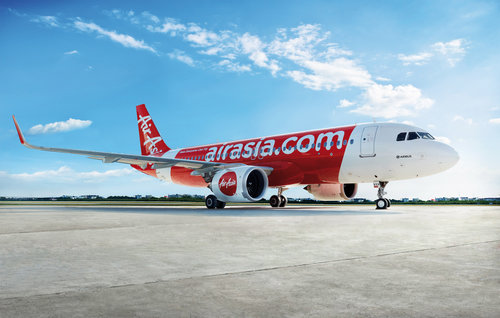
Your retail proposition strikes me as being localised and accessible.
I’ll tell you one thing that airports don’t do a great job with – food. Though you do see it expanding in the duty free outlets. I see a huge opportunity with the wellbeing sector. And you can sell smoked salmon from Norway to people in Asia, fish is huge! Foodstuffs are huge and snacks are huge! When I go to Big C [a large Thai grocery and general merchandising retailer] and I see what people from China are buying, it’s unbelievable. There’s a huge opportunity.

To conclude Tony, of all the things you’ve done down the line, where does this fit in terms of excitement?
Oh, I think this is big-time excitement because I’ve been saying for years and years, “I’m not an airline,” which of course no-one believes!
I started off saying “I’m an FMCG company.” So, I just happen to be moving people on a plane, but how many retailers have 80 million people coming into their shops? So that didn’t work. But if I get OURSHOP right, I’m a digital company. And if I get my payment side right with BigPay [AirAsia’s e-wallet and prepaid card service], I’m a fintech company.
So, this is my transformation which no other airline is doing. I want to be the travel emporium mixed in with e-commerce. Take Uber or Amazon. They spent billions of dollars acquiring customers before they made money – all funded by the stock market. I make money from my customers by flying them and now we are going to monetise it in the best possible way. We’re a little bit behind the curve in terms of the tech world, but that’s an advantage because now I get to use the best of the models. I’ve seen all the models.
No airline’s doing what we’re doing and no-one can do it because of our geographic reach. So, it’s very exciting because if it works, I’m a digital company, and that’s my aim. Get away from being an airline!
And the whole fintech thing works for you, of course, doesn’t it? You don’t want cash up there in the sky, that’s for sure.
I’ve got three things going here. You can begin to see where I’m building. The e-commerce, the payment system – which also has lots of advantages for travellers in that I’m going to stop the rip-off by credit card companies – and my logistics platform. I can move goods. My last mile I just tie up with loads of local providers. Country to country, no-one can beat my network. No-one. No DHL, FedEx, no-one. So, I’ve got three platforms. Payment, e-commerce, logistics.
This is the tool [points to his cell phone] where I can push. I can say “Hey, do you want this,” and I’ll give you an extra 20,000 points.
It’s huge. The great companies are the great implementers. We implemented the airline really well. Can we do it in the digital world? There are going to be a lot of skeptics but that’s great if no-one’s going to believe it. But by the time we get it right, they’ll be three years behind.
I think you’re pretty relaxed about the skepticism.
That’s been my whole life! It’s AirAsia X, whether it’s this, whether it’s something else. But that’s life.
ABOUT AIR ASIA AirAsia, the world’s leading low-cost carrier, services an extensive network of over 130 destinations across Asia Pacific. Since starting operations in 2001, AirAsia has carried more than 500 million guests and grown its fleet from just two aircraft to over 200. The airline is proud to be a truly Asean (Association of Southeast Asian Nations) airline with established operations based in Malaysia, Indonesia, Thailand and the Philippines as well as India and Japan, servicing a network stretching across Asia, Australia and New Zealand, the Middle East and the US.
AirAsia has been named the World’s Best Low-Cost Airline at the annual Skytrax World Airline Awards nine times in a row from 2009 to 2017. AirAsia was also awarded World’s Leading Low-Cost Airline for the fifth consecutive year at the 2017 World Travel Awards, where it became the inaugural recipient of the World’s Leading Low-Cost Airline Cabin Crew award. |











